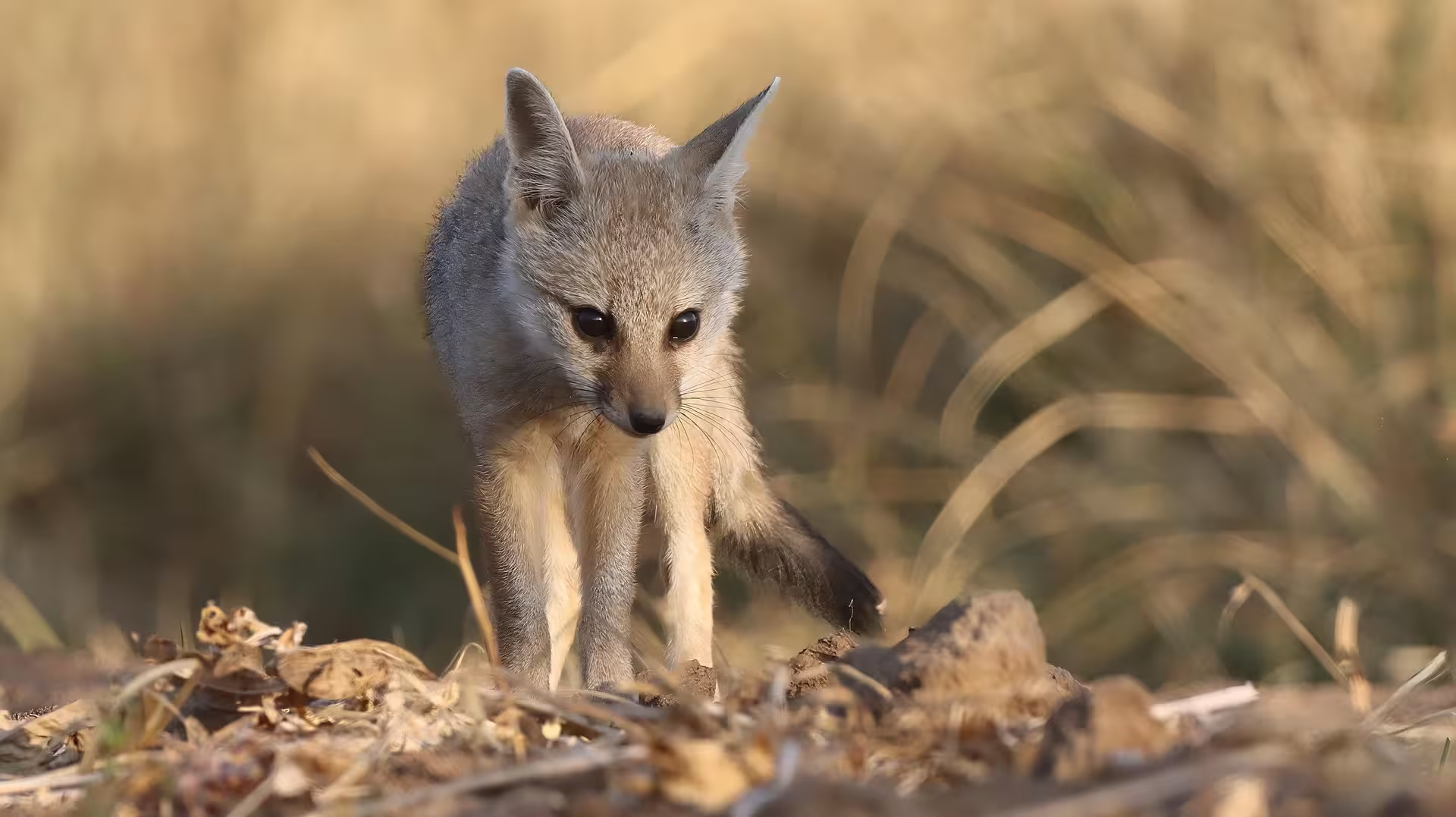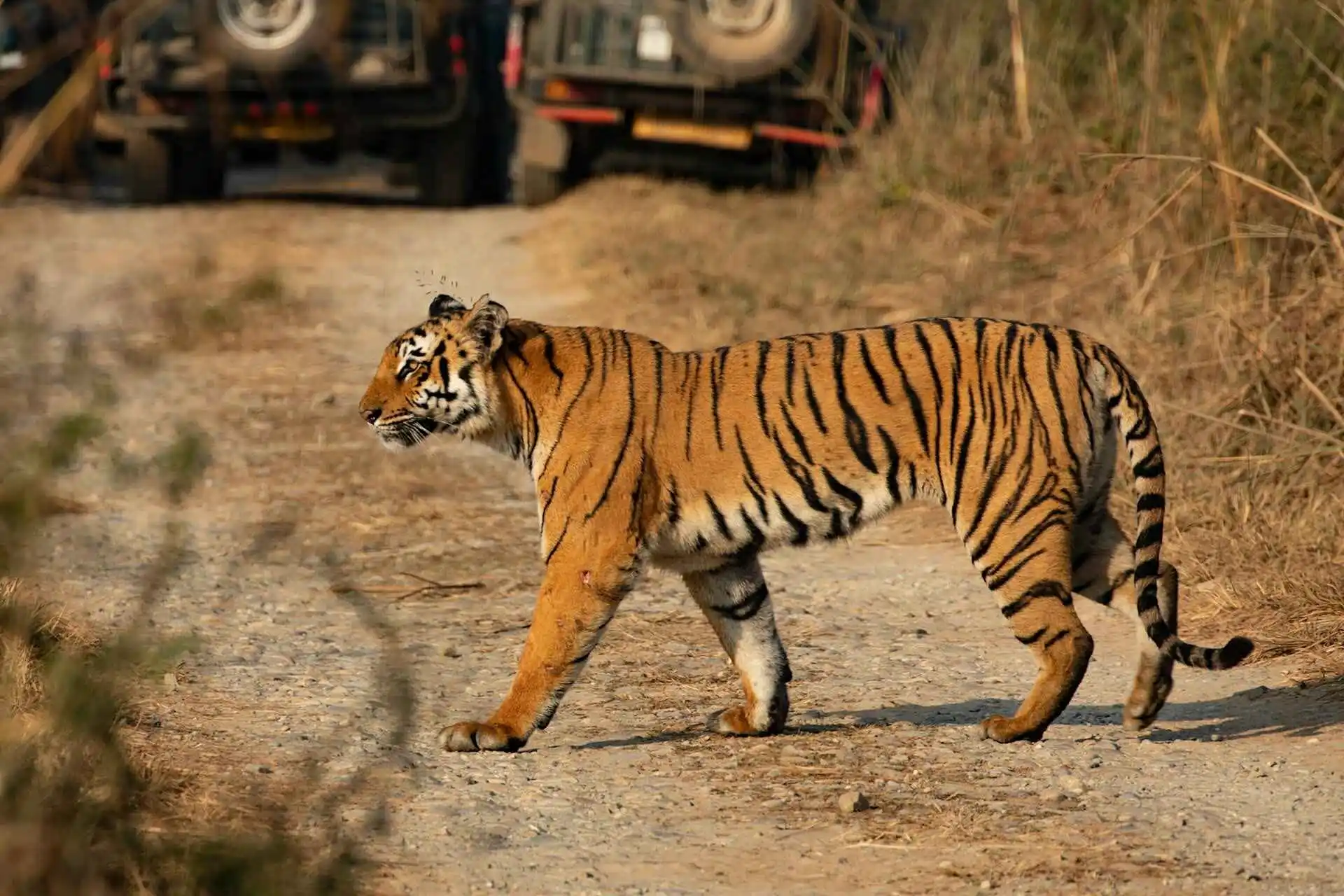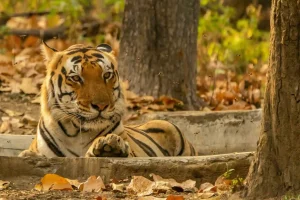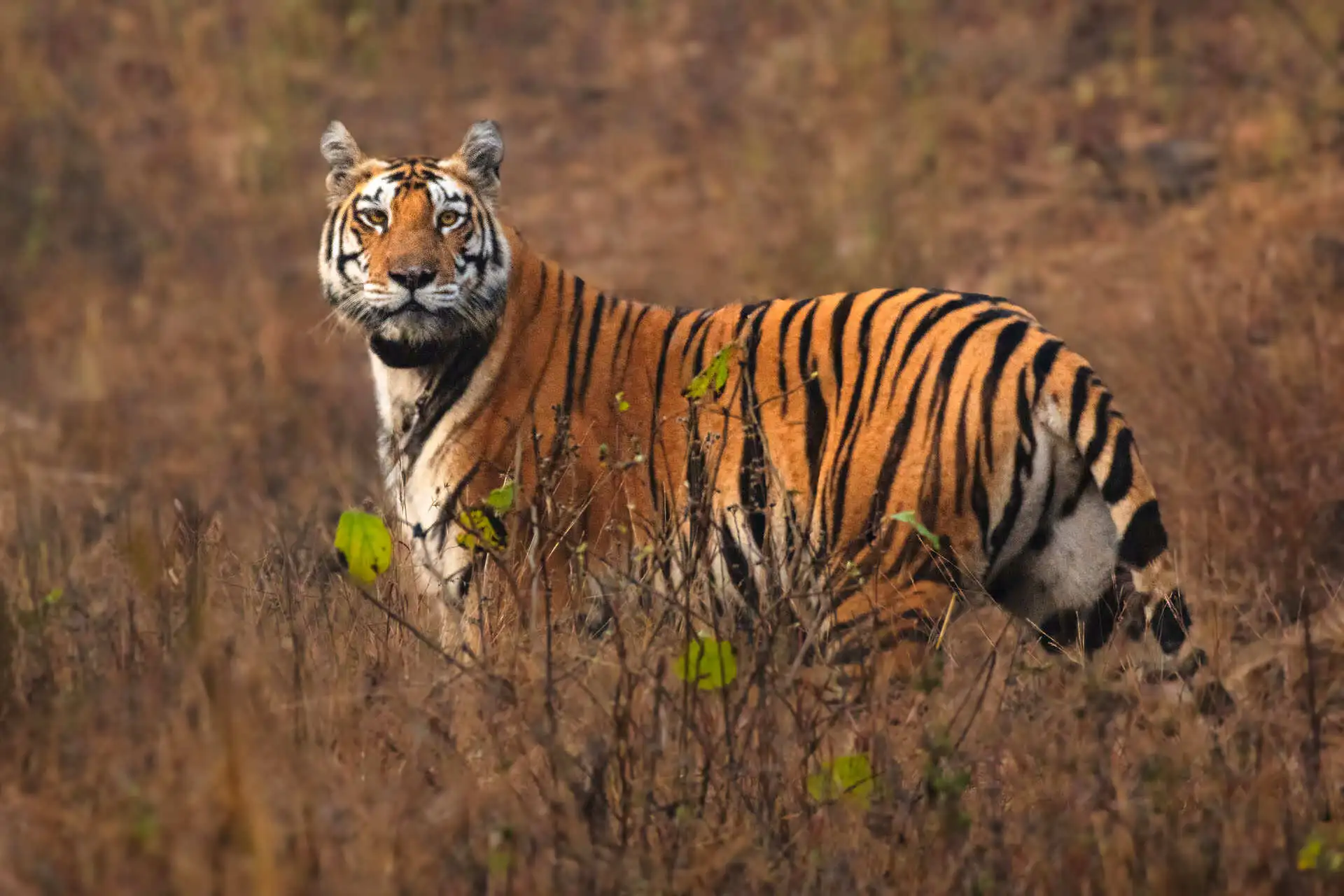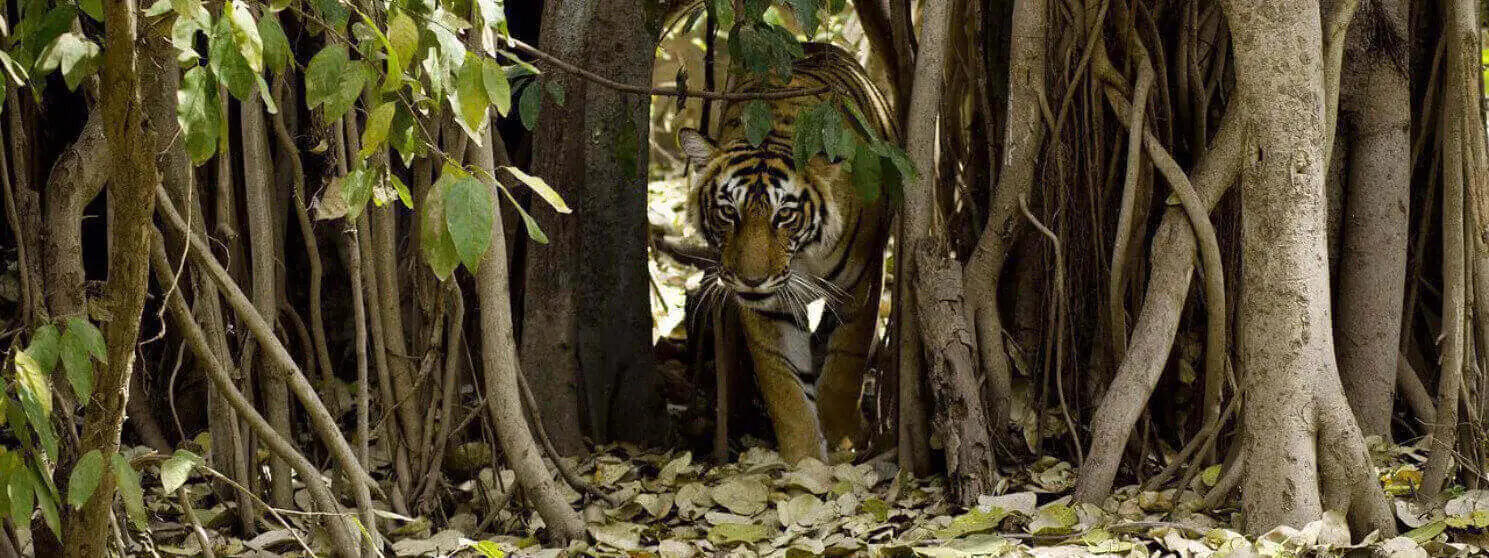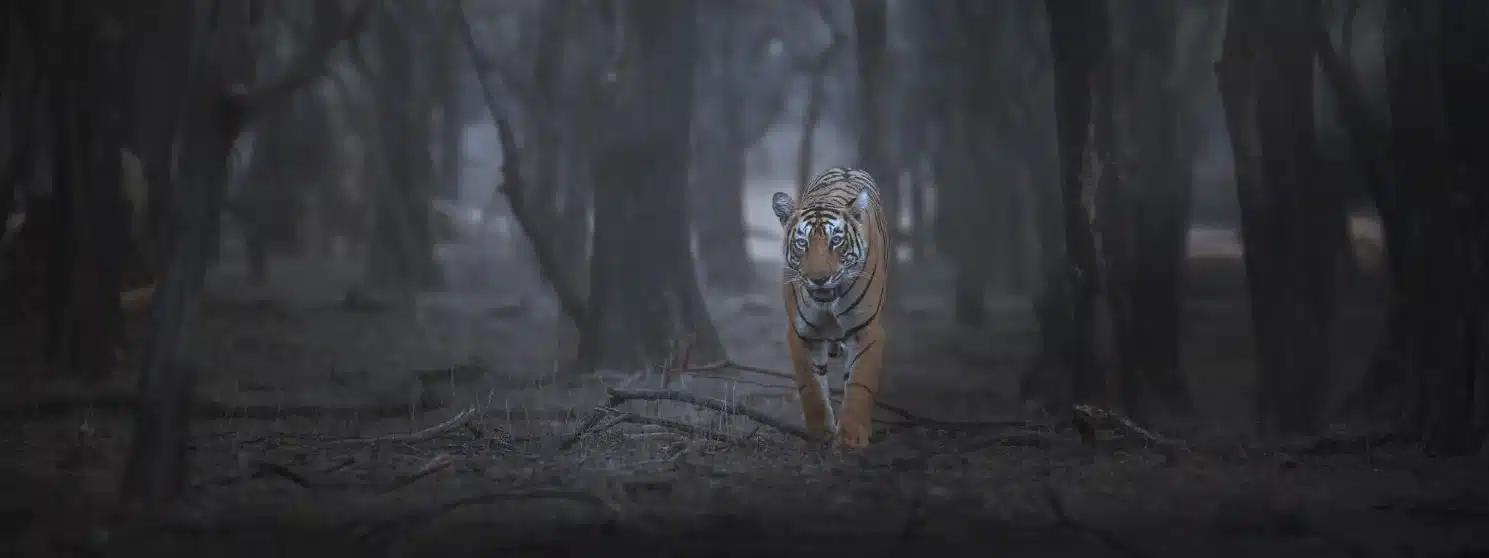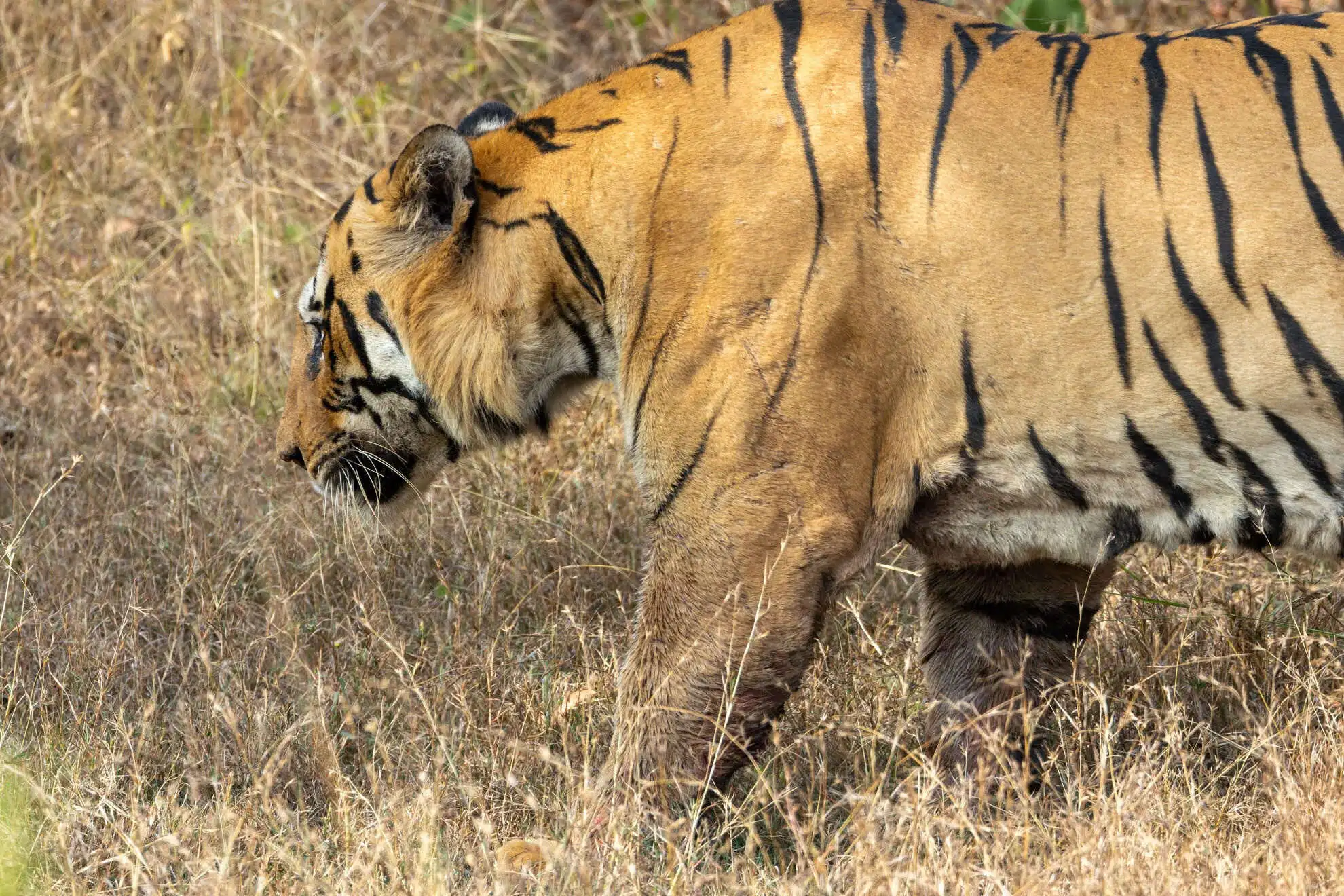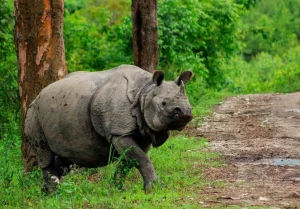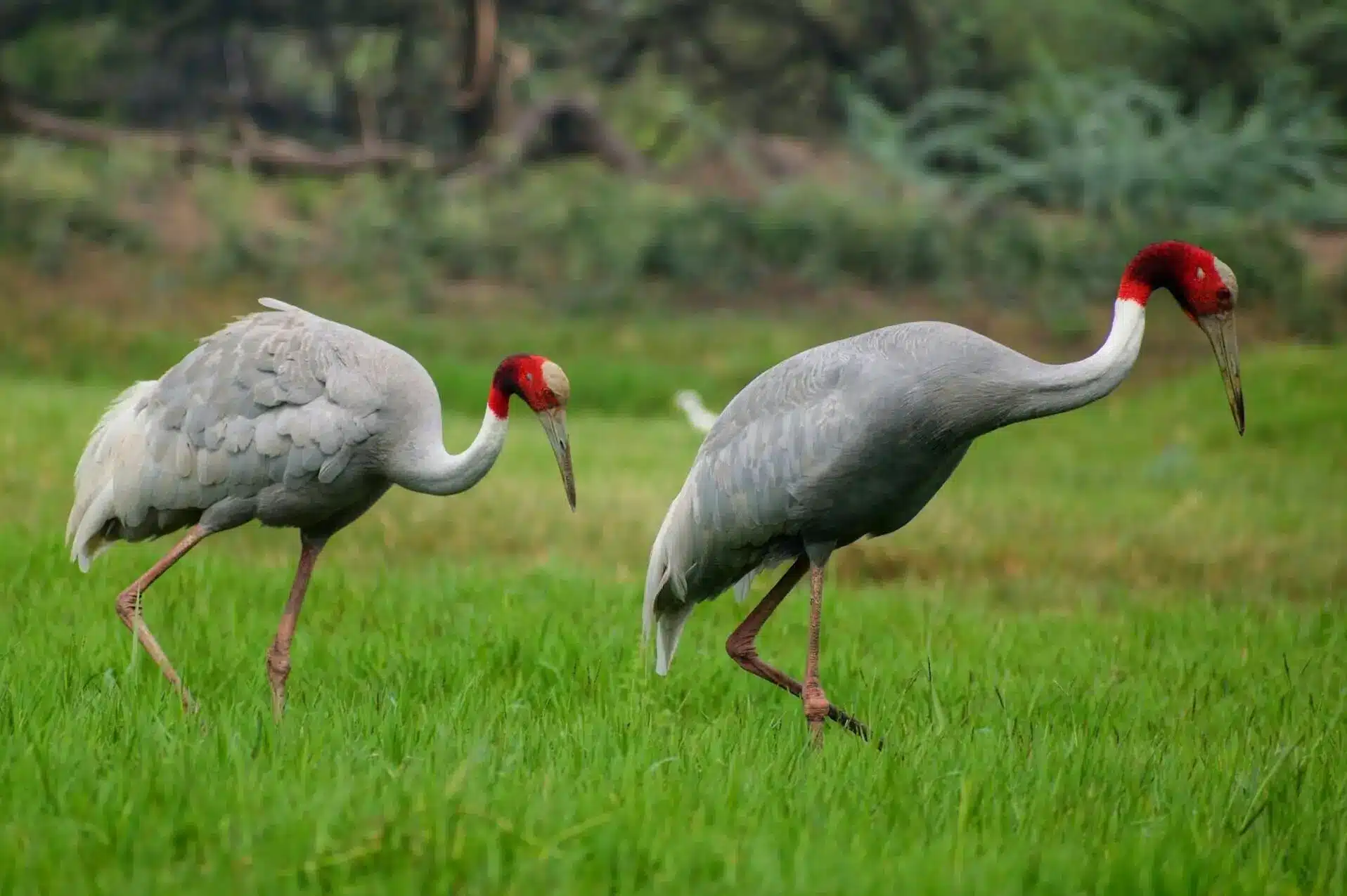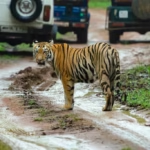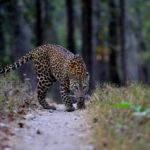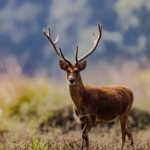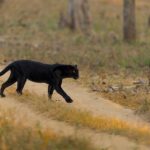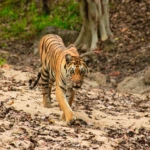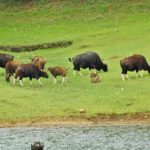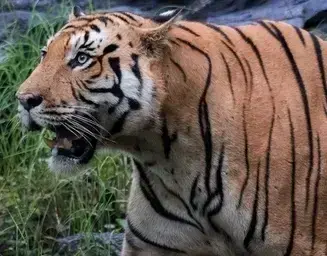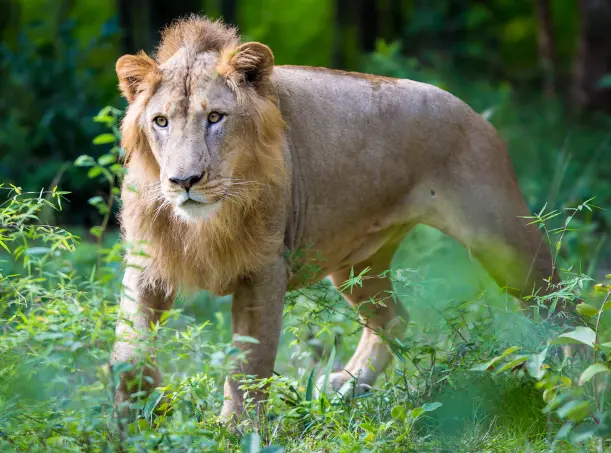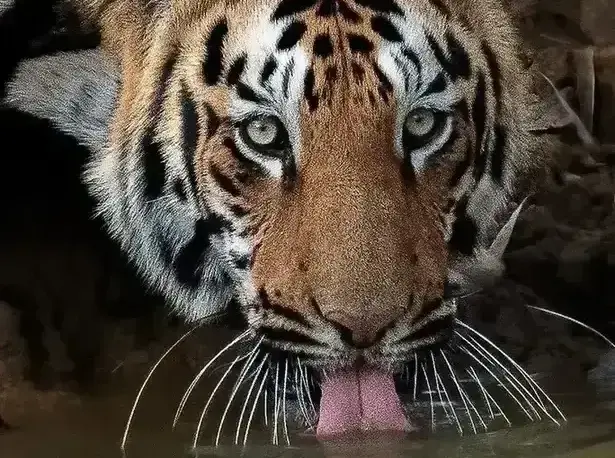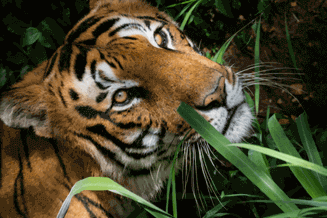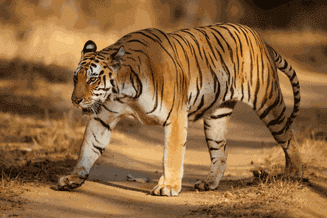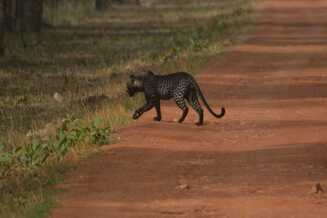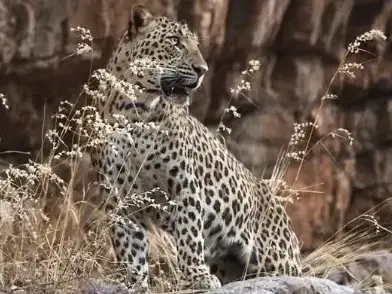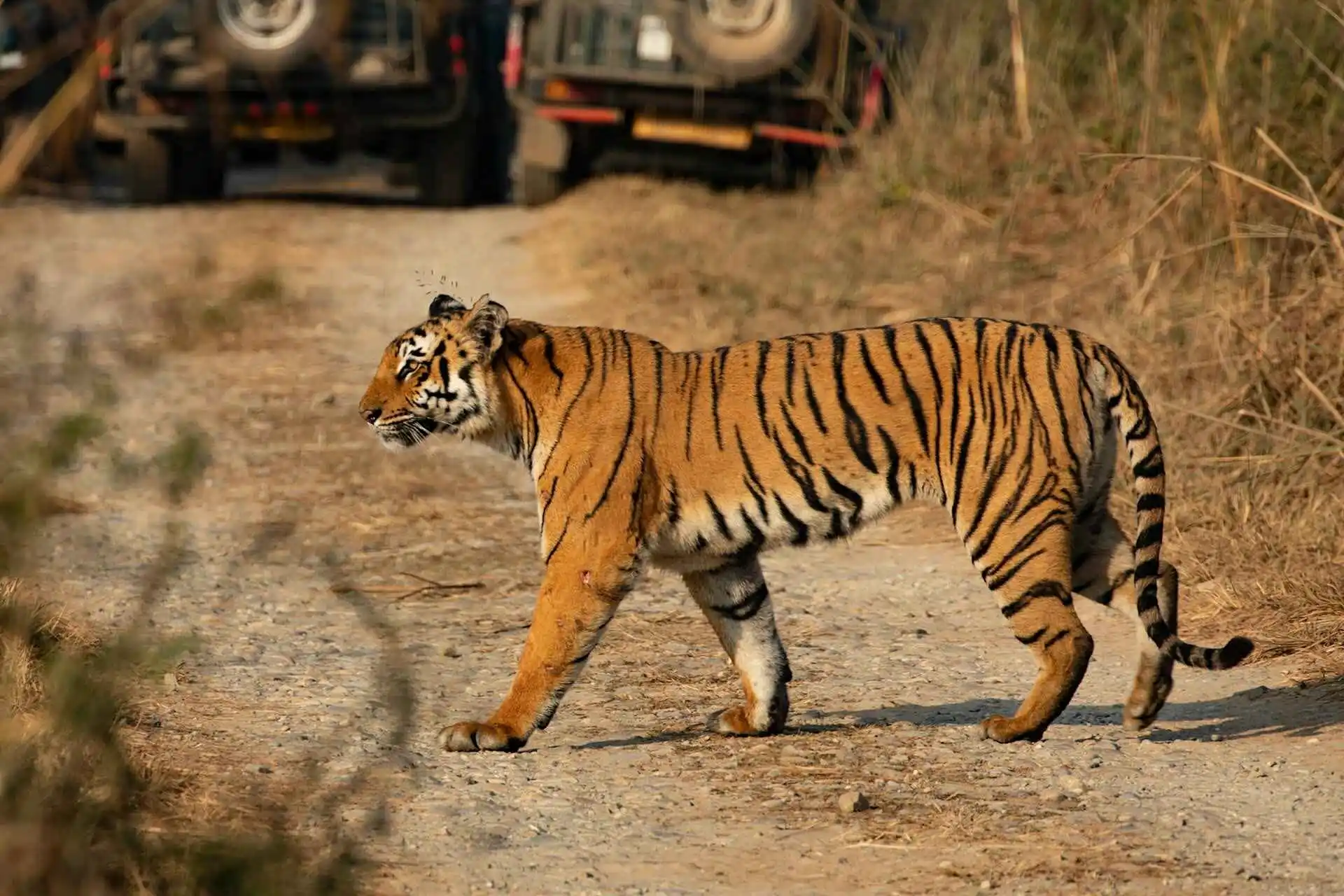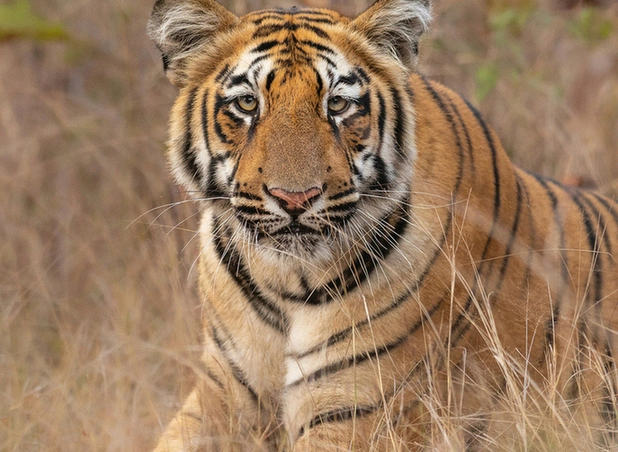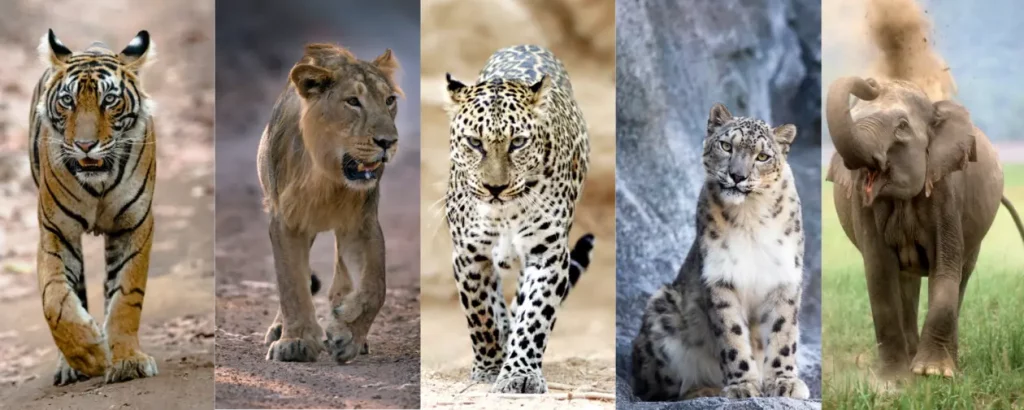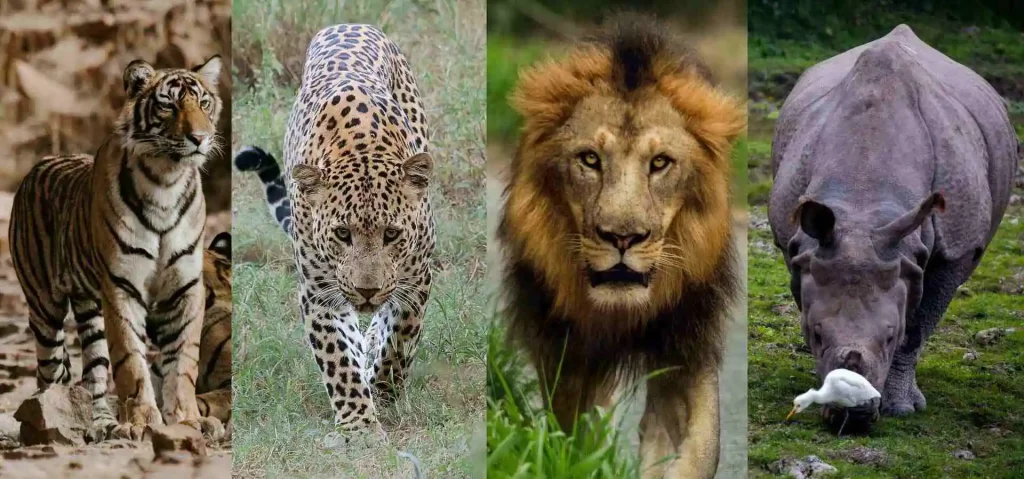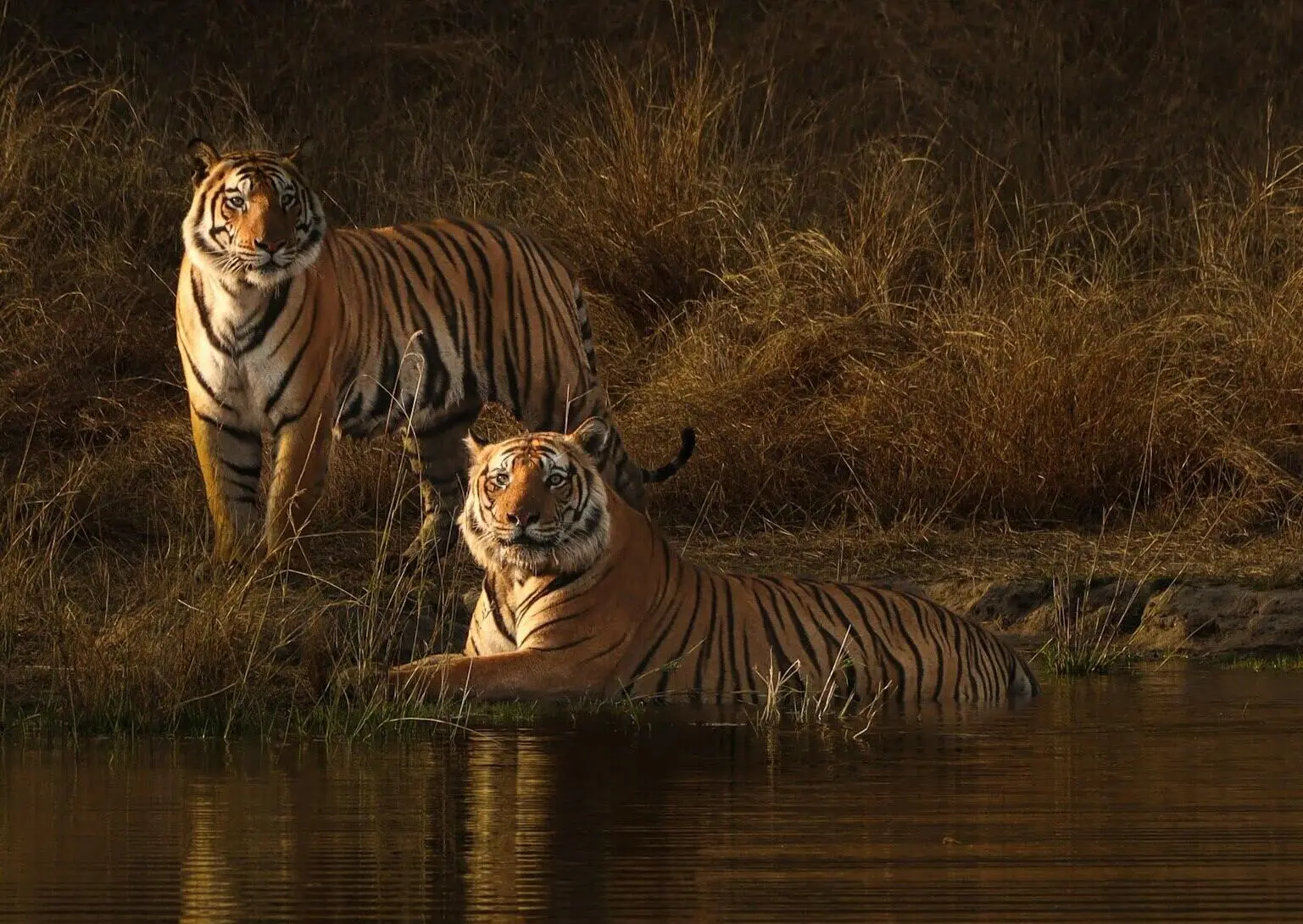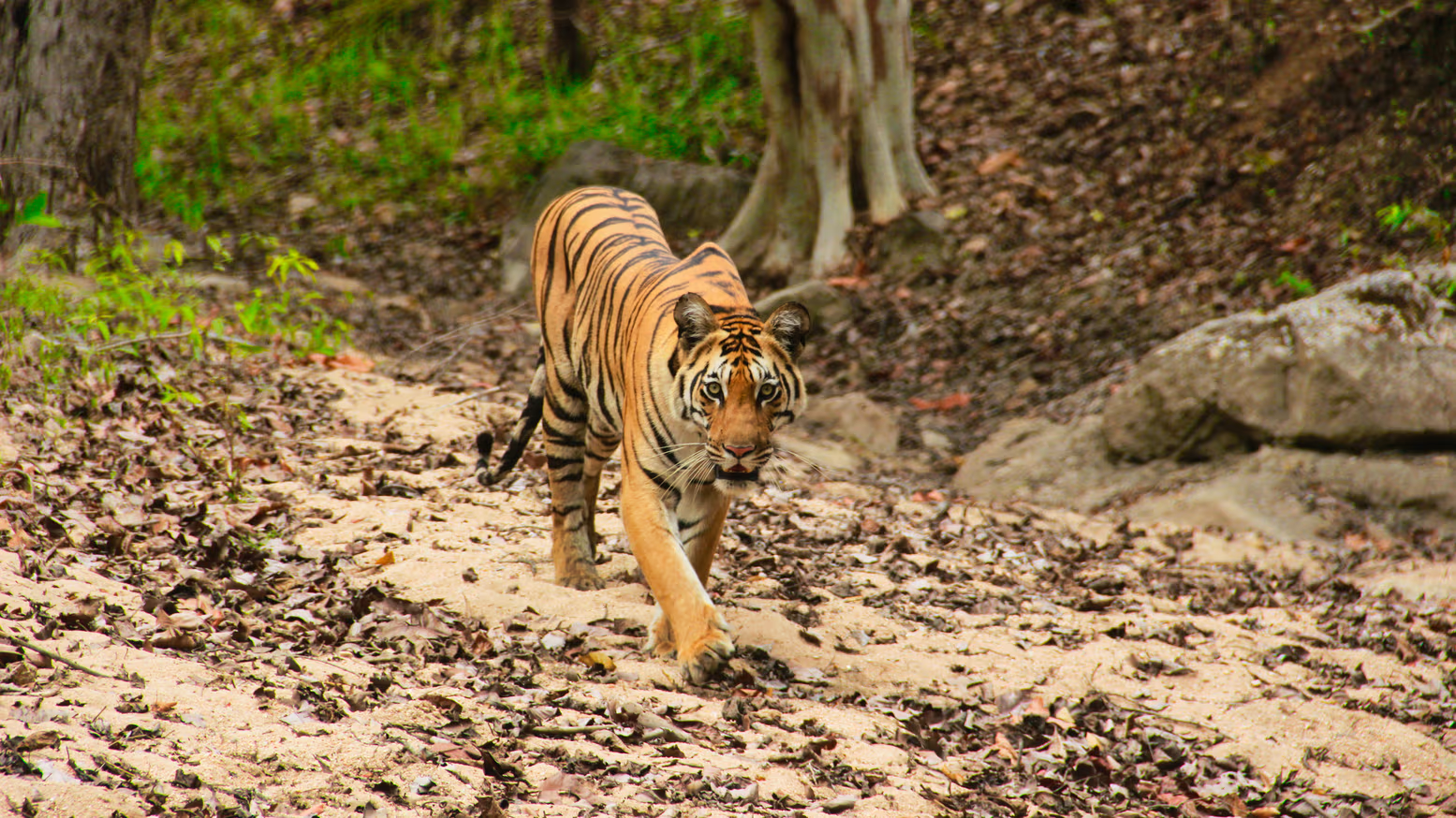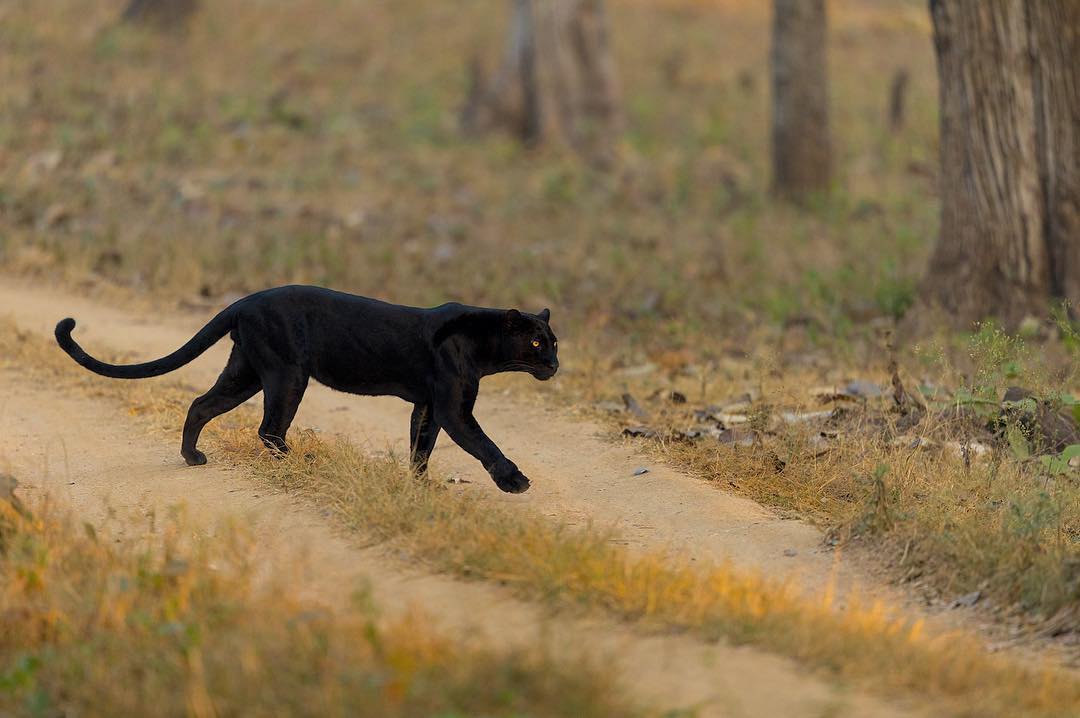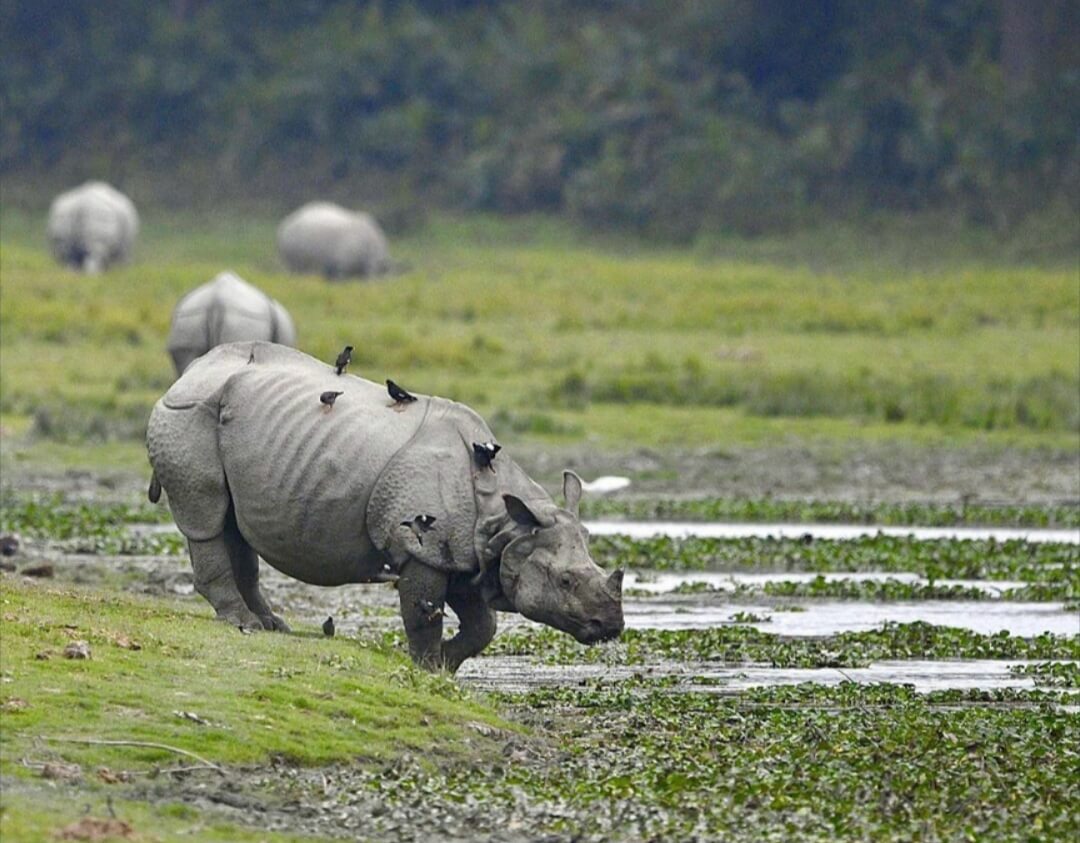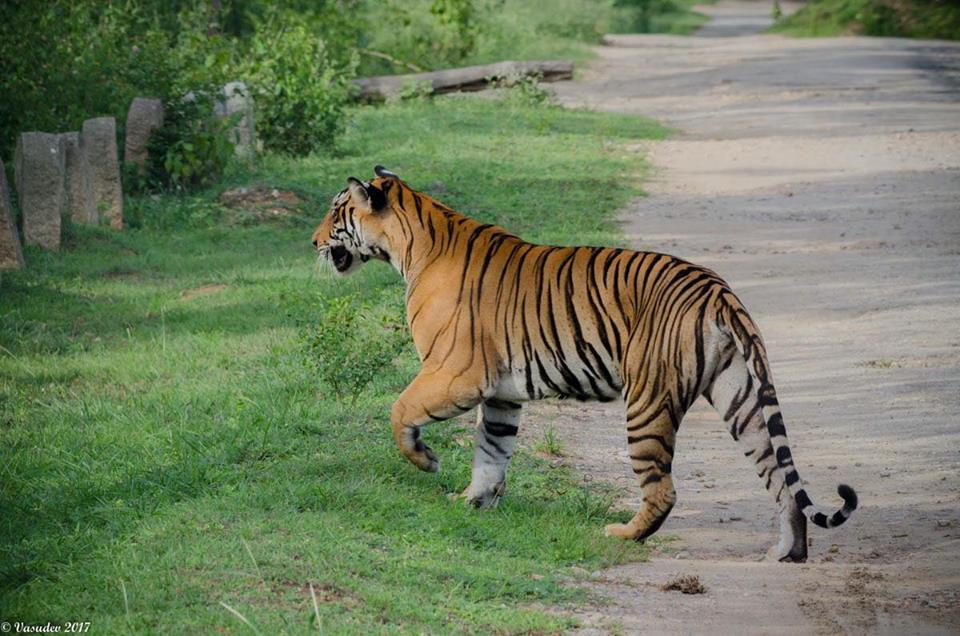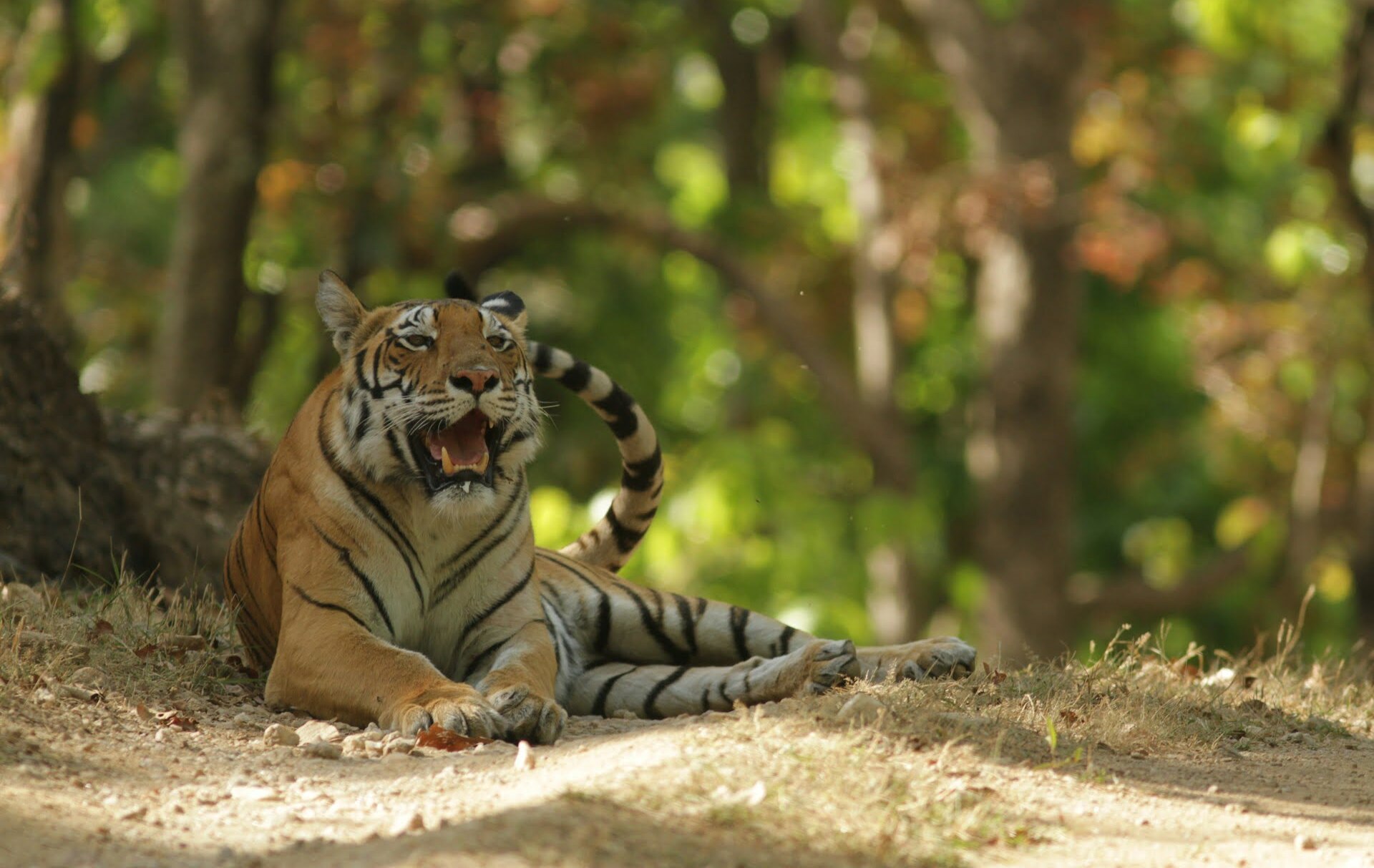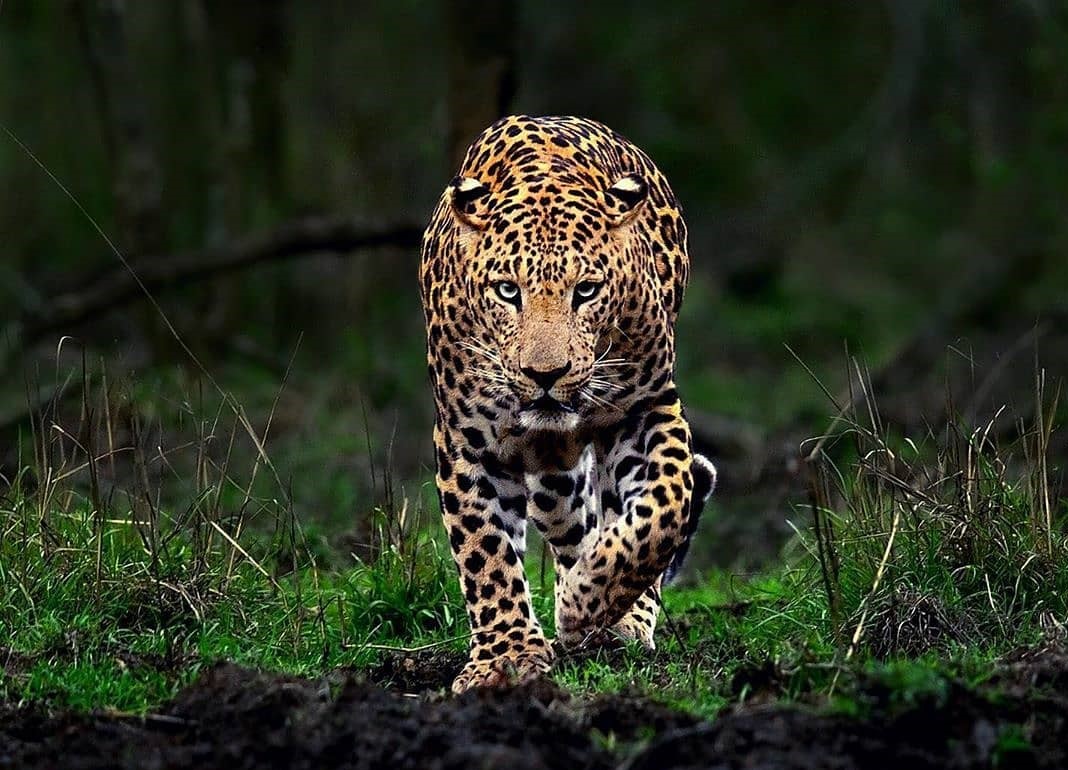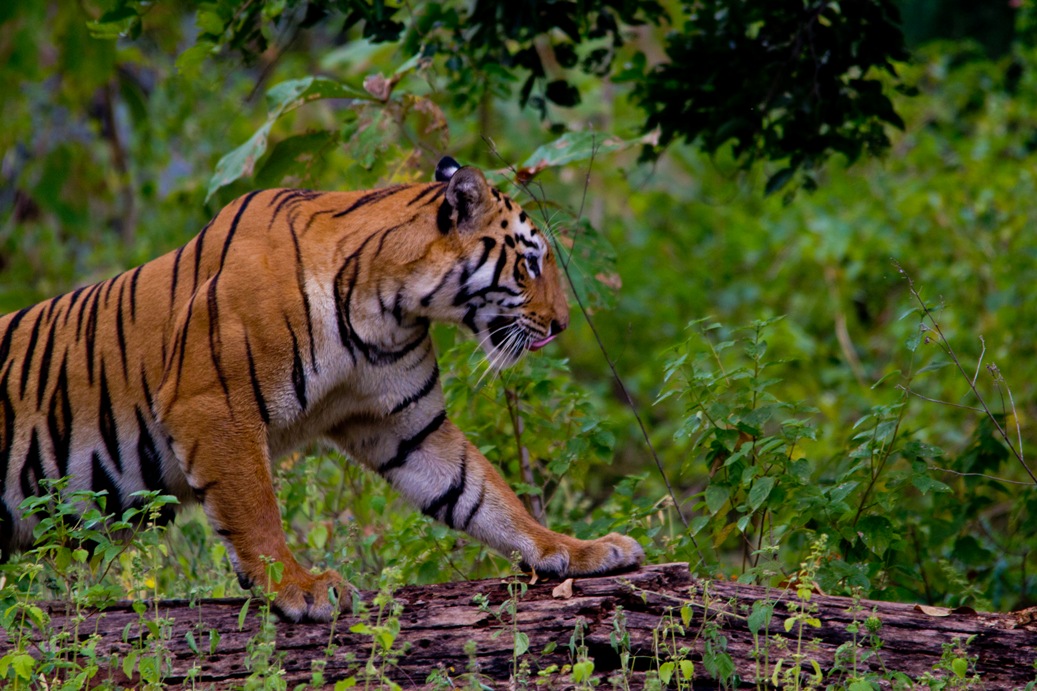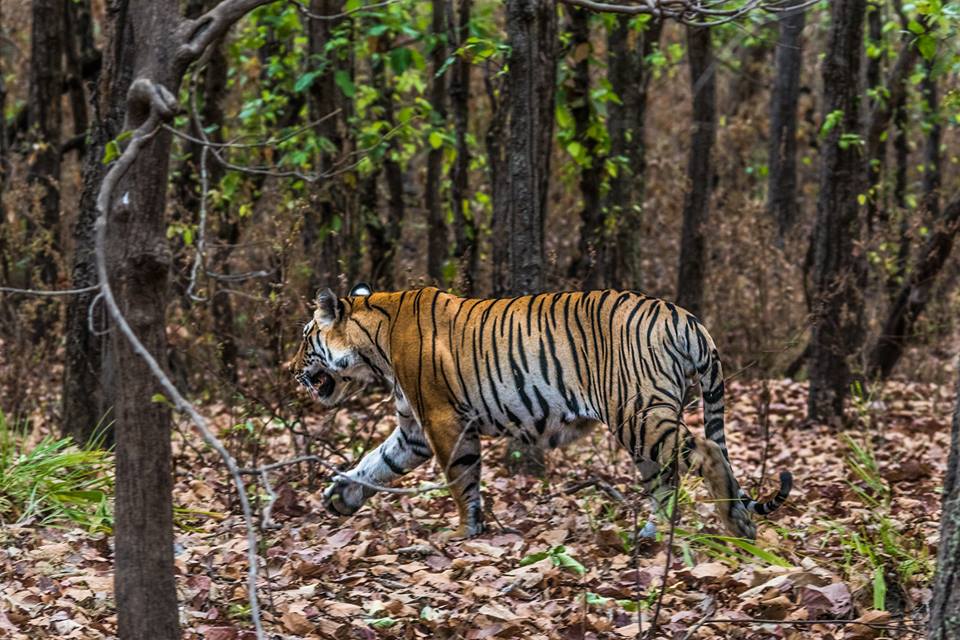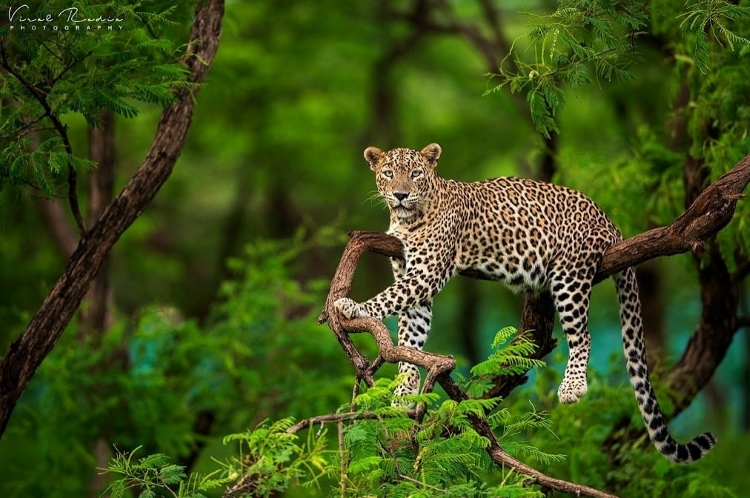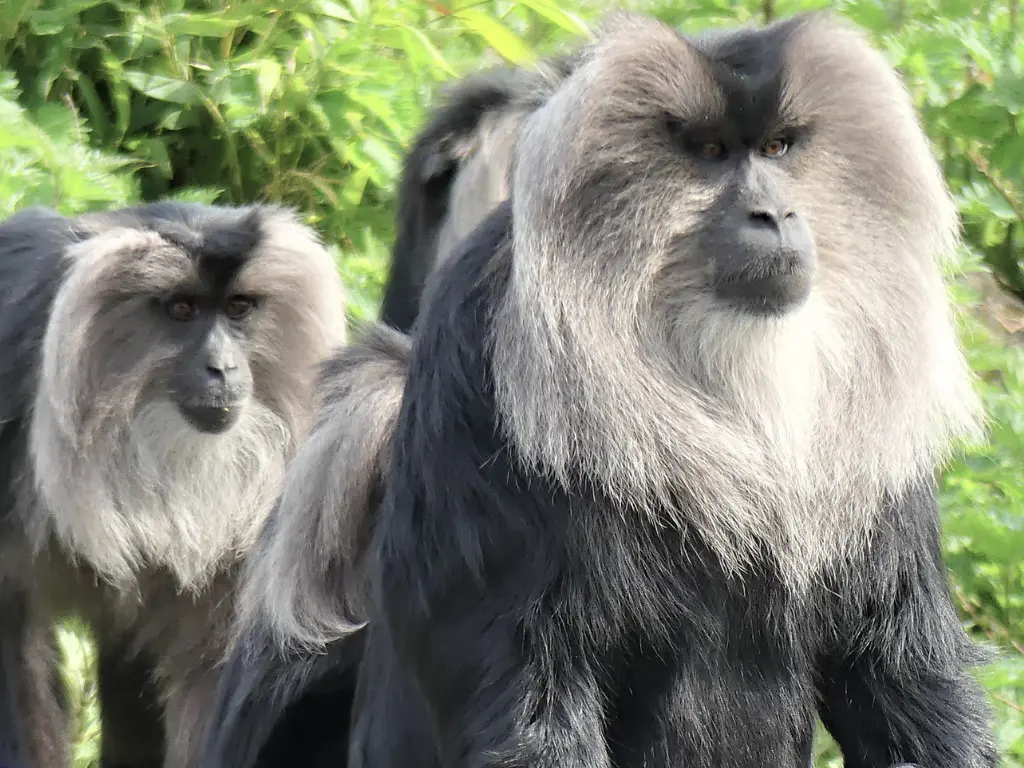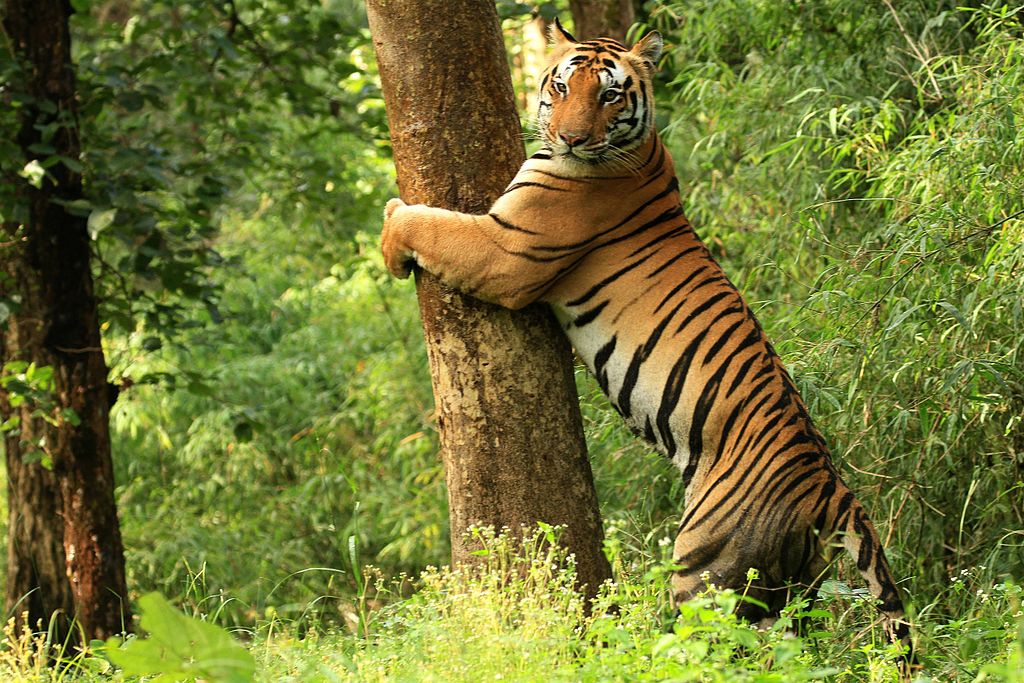Many people in India mix up jackals, wolves, foxes, and wild dogs. All four belong to the dog family, and at first glance, they may look alike. But each of them lives differently, hunts differently, and plays a unique role in nature. This post breaks down what they have in common and how they differ in size, looks, diet, and behavior.
What Do They Have in Common?
All four animals – wolf, dhole, golden jackal, and Indian fox, belong to the Canidae family. They have:
- Sharp teeth
- Long snouts
- Good hearing and smell
- Strong legs for running
- Carnivorous or mixed diets
- Thick fur that matches their habitat
They live in different parts of India and help control the balance of nature by hunting smaller animals and cleaning up waste.
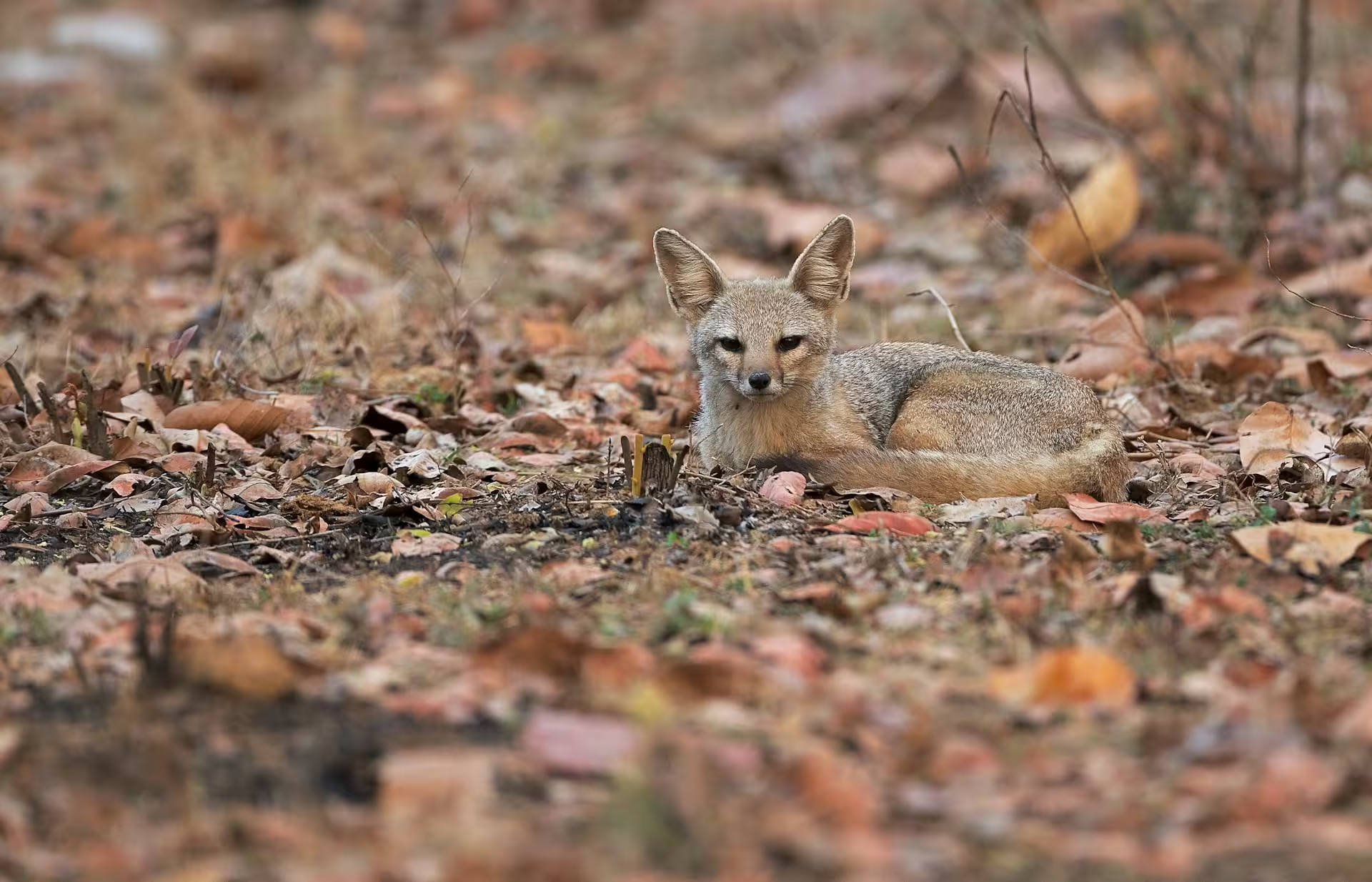
Indian Fox
How Indian Jackals, Wolves, Foxes, and Dholes Differ
Size Comparison
Indian Wolf
The Indian wolf is the biggest of the four. It can grow up to 90 cm at the shoulder and weigh around 20 to 30 kg. Its long legs and lean body help it move quickly across open grasslands.
Indian Wild Dog (Dhole)
Dholes are slightly smaller than wolves, usually weighing between 15 to 20 kg. They are strong runners and excellent team hunters.
Golden Jackal
Jackals are medium-sized, standing shorter than dholes. They usually weigh around 8 to 10 kg. Their size helps them move easily through dense bushes and scrub.
Indian Fox
The smallest among all, the Indian fox weighs just 3 to 5 kg. It has a slim body and short legs, perfect for quick movements in dry open lands.
Appearance
Indian Wolf
They have a pale gray or brownish coat, long legs, and a bushy tail. Their face is broad, and their body looks strong and alert.
Indian Wild Dog (Dhole)
Dholes have a reddish-brown coat, white underbelly, and a thick black-tipped tail. Their ears are rounder compared to the others.
Golden Jackal
Jackals have a golden, reddish, or gray coat. Their ears are pointed, and their body is built for running and quick turns.
Indian Fox
Indian foxes have a reddish-gray coat with black-tipped ears and tail. They look small and slender, with a sharp face and a large bushy tail.
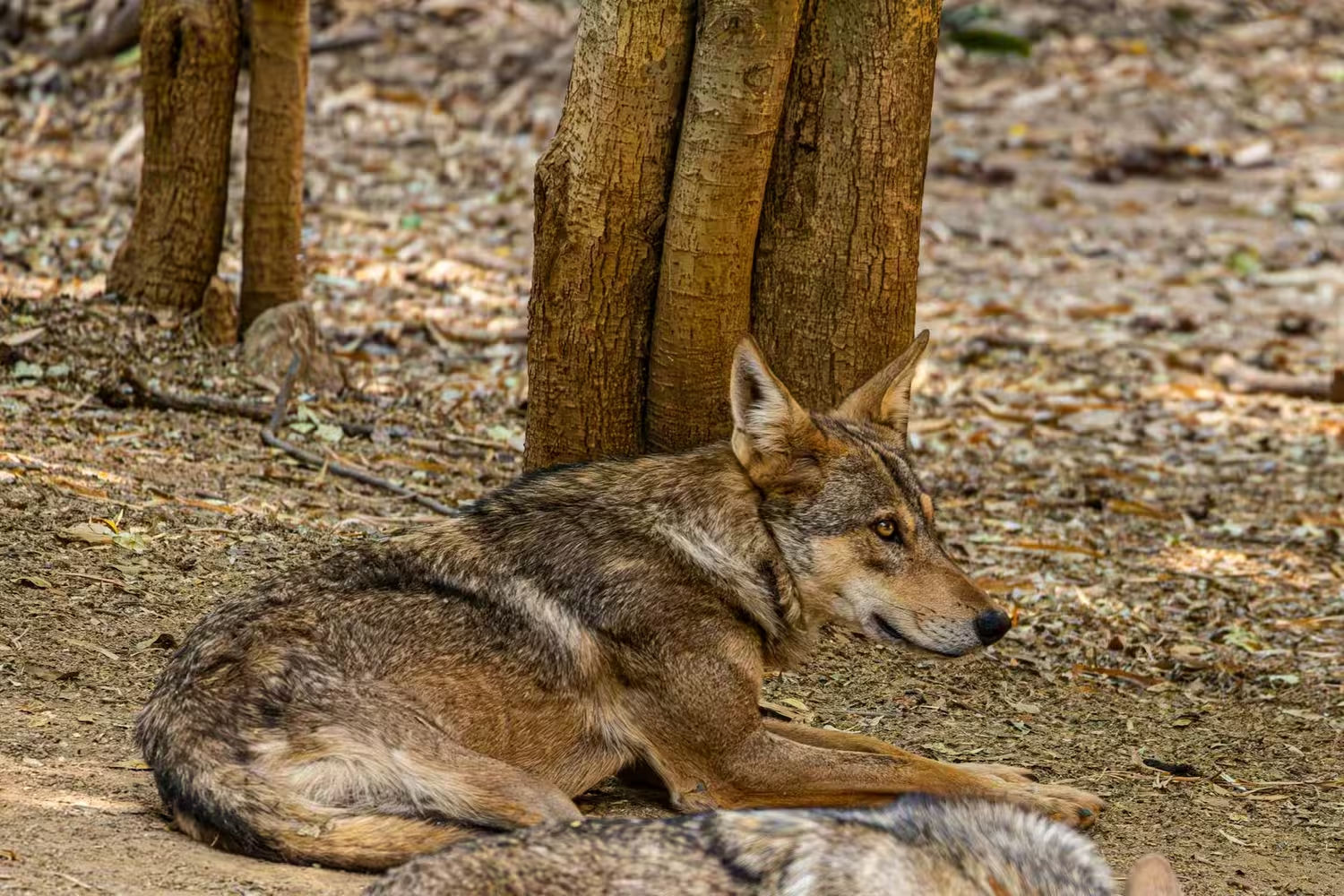
Indian Wolf Resting Under Tree
Coloration
Indian Wolf
Color ranges from gray to light brown. Their coat helps them blend in dry grasslands and scrub.
Indian Wild Dog (Dhole)
Reddish coat with white patches on the chest and belly. Their color stands out more in dense forests.
Golden Jackal
Mix of gold, brown, and gray shades. Their coat often blends with dry bushes and farmland areas.
Indian Fox
Reddish to gray with dark markings on ears and tail. Perfect for hiding in open dry landscapes.
Hunting Style
Indian Wolf
Wolves hunt mostly in small packs, usually at night. They rely on strategy and stamina. When chasing prey like blackbuck or chinkara, some wolves drive it toward others lying in ambush. They often go after weak or slow animals and sometimes use clever tricks to lure prey closer.
Indian Wild Dog (Dhole)
Dholes or Indian Wild Dogs are pack hunters and work like a team. They usually hunt during the day in groups of 6-12 or more. Using long chases, they tire out animals like deer or wild boar. Instead of a quick kill, they surround and bring down the prey by pulling it from the sides. They’re also known for letting the pups eat first at a kill.
Golden Jackal
Jackals usually hunt alone or in pairs. They use stealth and sharp hearing to catch small prey like rodents or birds. They can also scavenge, often following tigers or leopards to grab leftovers. In some cases, a pair may team up to hunt slightly bigger animals or dig into burrows for prey.
Indian Fox
Foxes are solitary hunters. They move carefully in open grasslands, mostly at dawn or dusk. They pounce quickly on small creatures like insects, lizards, or mice. Sometimes they chase small mammals in short bursts. They rely on agility and patience while hunting.
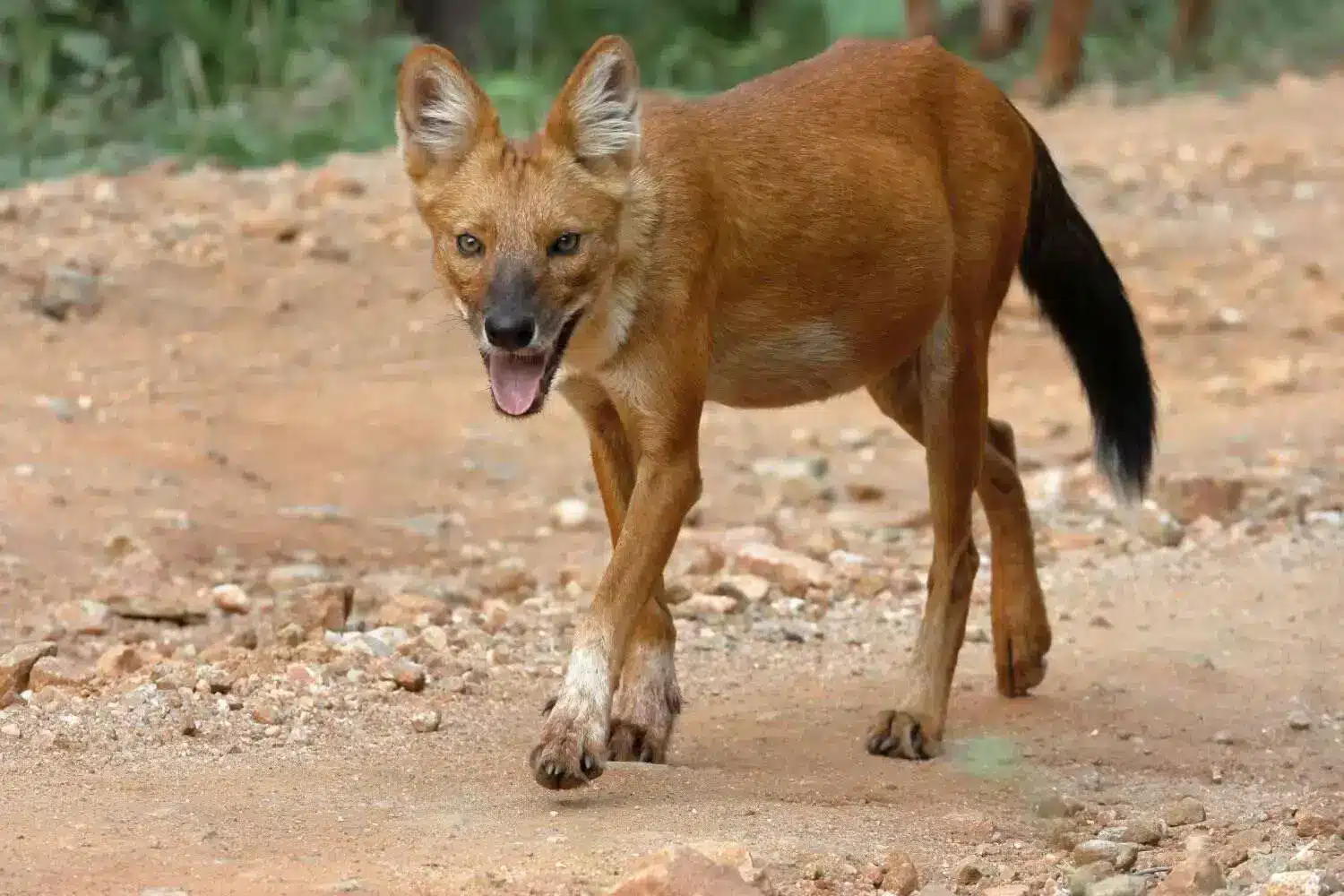
Wild Dog in Tadoba National Park
Diet
Indian Wolf
Their diet mainly includes blackbuck, chinkara, hares, and rodents. They prefer fresh kills and avoid carrion. In some regions, they may target livestock, which often leads to human conflict.
Indian Wild Dog (Dhole)
Dholes prefer medium to large prey like chital, sambar, wild boar, and even gaur calves. They rarely scavenge. A single kill is usually shared among the pack, and even the young ones are fed first.
Golden Jackal
Jackals eat a mix of meat and plant matter. They go after rodents, birds, lizards, and insects but also eat fruits, berries, and carrion. Their diet depends a lot on what’s available in the area.
Indian Fox
Their diet includes insects, small reptiles, rodents, and eggs. They also eat fruits, berries, and sometimes even leftovers near villages. They’re adaptable and opportunistic eaters.
Vocal Sounds
Indian Wolf
Wolves use deep howls to call out to their pack, especially at night. They also bark or growl when they sense danger.
Indian Wild Dog (Dhole)
Dholes don’t howl. Instead, they use high-pitched whistles and chirps to stay in touch during hunts.
Golden Jackal
Jackals make loud yelping and howling sounds, often heard during late evenings and early mornings. It’s one way they mark their area.
Indian Fox
Indian foxes are quiet, but they may give short barks or soft calls. Most of their communication is through body signals.
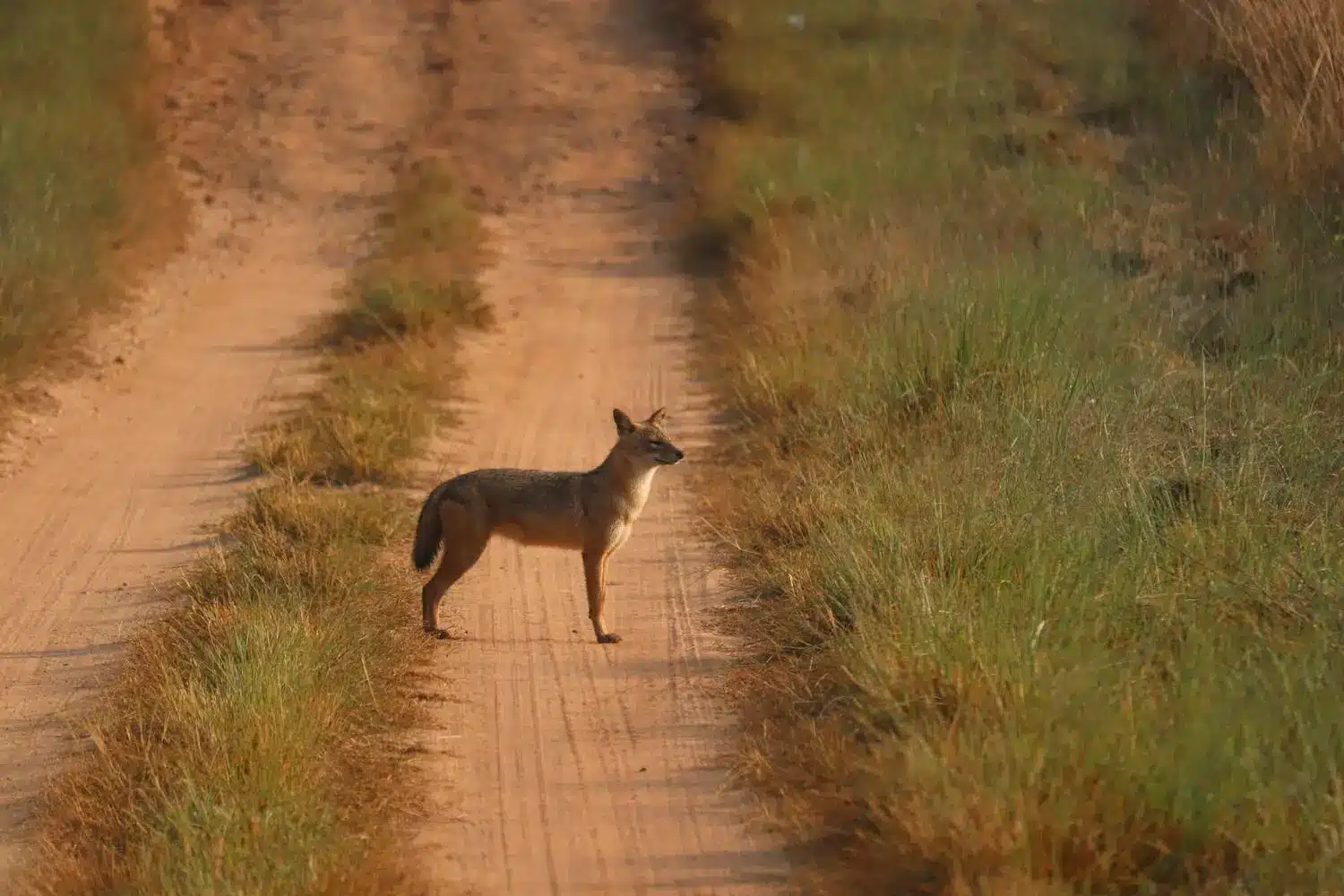
Golden Jackal on Dirt Road
Behaviour
Indian Wolf
Wolves live in small family groups or pairs. They are shy around humans and often travel at dawn or dusk.
Indian Wild Dog (Dhole)
Dholes are social animals. They live in large packs and are known for their teamwork while hunting.
Golden Jackal
Jackals often live as pairs or small families. They are active during early morning and evening hours.
Indian Fox
They prefer to live alone or in pairs. They are mostly active at night and spend the day resting in burrows.
Habitat in India
Indian Wolf
They are found in open grasslands, scrub, and semi-arid areas of Maharashtra, Madhya Pradesh, Rajasthan, Gujarat, and Karnataka.
Indian Wild Dog (Dhole)
Dholes live in forest areas across Central India, the Western Ghats, and parts of the Northeast. They prefer dense cover and water sources.
Golden Jackal
Jackals are widespread in India. They live in forests, farms, near villages, and even in the outskirts of towns.
Indian Fox
Indian foxes prefer dry grasslands, open plains, and scrublands, especially in Gujarat, Rajasthan, and parts of the Deccan Plateau.
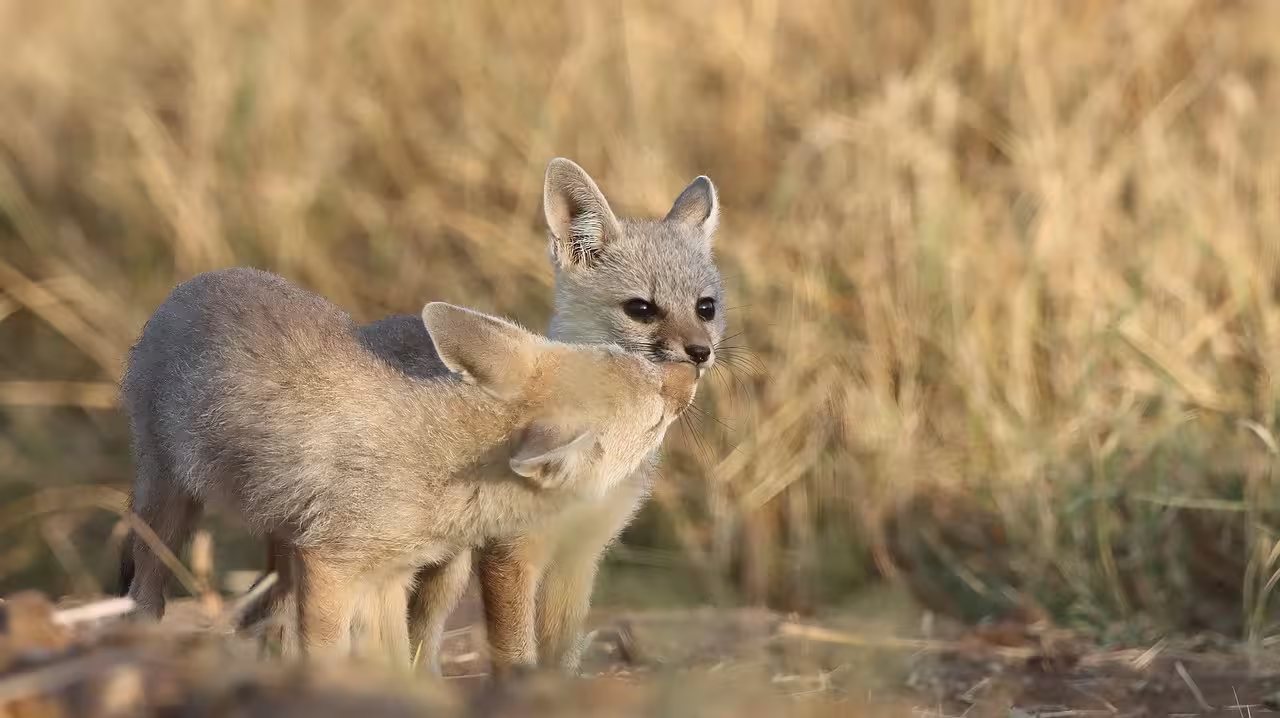
Playful Bengal fox kits in the sun
Conservation Status
Indian Wolf
The Indian wolf is listed as Endangered in India. Habitat loss, shrinking prey base, and conflicts with humans, especially due to livestock attacks, pose serious threats. It’s protected under Schedule I of the Wildlife Protection Act, 1972, but still needs more focused conservation efforts.
Indian Wild Dog (Dhole)
Dholes are classified as Endangered on the IUCN Red List. In India, they are protected under Schedule II of the Wildlife Protection Act. Major threats include habitat fragmentation, loss of prey, and diseases from domestic dogs. Despite being top predators, they’re often overlooked in conservation priorities.
Golden Jackal
Golden jackals are listed as Least Concern by the IUCN. They are adaptable and thrive near human settlements. However, in some areas, they face threats from poisoning, habitat change, and persecution. In India, they are protected under Schedule II of the Wildlife Protection Act.
Indian Fox
The Indian fox is marked as Least Concern, but its population is declining due to rapid habitat loss from agriculture, road construction, and development. It is listed under Schedule II of the Wildlife Protection Act, 1972, but lacks targeted conservation programs.
Where to Spot Them on Safari
Not all canids are easy to spot in the wild. Their behavior, habitat, and population density play a huge role in how likely you are to encounter them on a safari in India.
Easier to Spot
Dhole (Indian Wild Dog)
Your best bet for spotting dholes is in protected reserves with healthy prey bases and undisturbed forest cover. They are diurnal and move in packs, which makes them more visible.
Top Parks to Spot:
- Tadoba Andhari Tiger Reserve (Maharashtra)
- Bandipur and Nagarhole National Parks (Karnataka)
- Periyar Tiger Reserve (Kerala)
- Kanha and Pench Tiger Reserves (Madhya Pradesh)
Best Safari Packages to Spot the Dhole (Indian Wild Dog)
Golden Jackal
Golden jackals are quite common in many landscapes, including the buffer zones of national parks. Being adaptable, they’re often seen even near villages or park boundaries.
Top Parks to Spot:
- Ranthambhore National Park (Rajasthan)
- Sundarbans (West Bengal)
- Gir National Park (Gujarat)
- Keoladeo National Park (Bharatpur, Rajasthan)
- Kanha and Bandhavgarh (Madhya Pradesh)
Best Safari Packages to Spot the Golden Jackal
Rare or Elusive Sightings
Indian Wolf
Wolves are shy, crepuscular, and inhabit open grasslands or scrub forests – habitats that are often outside regular tourist safari zones. Spotting them requires patience and luck.
Top Parks to Spot:
- Blackbuck National Park, Velavadar (Gujarat)
- Great Indian Bustard Sanctuary, Nannaj (Maharashtra)
- Kutch Desert Wildlife Sanctuary (Gujarat)
- Rollapadu Wildlife Sanctuary (Andhra Pradesh)
Indian Fox (Bengal Fox)
These small, elusive foxes are mostly nocturnal and solitary, making them hard to spot during typical safari hours. They prefer open dry habitats rather than dense forested parks.
Top Regions to Spot:
- Little Rann of Kutch (Gujarat)
- Desert National Park (Rajasthan)
- Nannaj Grasslands (Maharashtra)
- Rollapadu Wildlife Sanctuary (Andhra Pradesh)
Common Myths and Mix-ups
- Many people think dholes are just stray dogs from the forest. They are not. They are wild and very different.
- Foxes may look cute but cannot be tamed or kept as pets.
- Wolves are feared but mostly avoid people unless threatened or desperate.
- Jackals are often blamed for killing livestock, but many times they eat what’s already dead.
Comparison of Wolf, Dhole, Jackal, and Fox in India
| Feature | Indian Wolf | Dhole (Wild Dog) | Golden Jackal | Indian Fox |
|---|---|---|---|---|
| Scientific Name | Canis lupus pallipes | Cuon alpinus | Canis aureus | Vulpes bengalensis |
| Size | 60–85 cm at shoulder | 45–50 cm at shoulder | 40–50 cm at shoulder | 35–45 cm at shoulder |
| Weight | 20–30 kg | 12–20 kg | 8–12 kg | 4–5 kg |
| Build | Long-legged, lean body | Compact, muscular, red coat | Medium build, yellowish coat | Small, slender, bushy tail |
| Habitat | Grasslands, scrublands | Dense forests, hills | Scrub, open forests, rural | Plains, scrublands |
| Social Behavior | Small packs or pairs | Large, tightly knit packs | Pairs or small family units | Pairs or solitary |
| Diet | Ungulates, hares, rodents | Deer, boar, small prey | Omnivorous | Insects, rodents, fruits |
| Hunting Style | Endurance chasers | Coordinated pack hunters | Opportunistic scavenger | Solo/stalk hunter |
| IUCN Status (India) | Endangered | Endangered | Least Concern | Least Concern |
| Best Place to Spot | Maharashtra, MP, Gujarat | Karnataka, Madhya Pradesh | Most states (esp. rural) | Rajasthan, Gujarat, MP |
| How Easy to Spot? | Rare and elusive | Occasionally seen on safaris | Common in open areas | Very shy, rarely seen |
Though they may look like distant cousins, the Indian wolf, dhole, jackal, and fox live very different lives. Each one fits perfectly into its own place in the wild – hunting, scavenging, and surviving in its own way. By knowing their differences, we can better understand and protect them. If you’re on safari or exploring the wild, now you’ll know who’s who.

